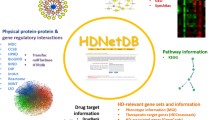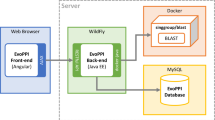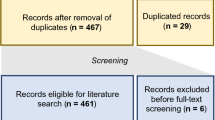Abstract
Nicotinamide adenine dinucleotide (NAD) is an essential metabolite in normal cellular physiology and its deregulation may lead to several pathological conditions. NAD interacts with a vast number of proteins, acting as a coenzyme, as a substrate and regulating the interaction between proteins. The goals of this study were to characterize the proteins involved in NAD metabolism and to identify putative new NAD regulated proteins. Using an in silico approach, we first defined a NAD-binding dataset, that we characterized through pathway enrichment analysis and protein structural domains analysis. We then screened the full human proteome and further analyzed a selection of potential NAD-binding proteins. This global study of the NAD interactome resulted in the identification of new potentially NAD-binding proteins (NADPBs), including TRPC3 and a few isoforms of DGA kinases, which are involved in calcium signaling. NADBPs participate in several metabolic pathways and signaling processes in the cell, while proteins interacting with NADPBs are mostly involved in signaling pathways, including pathways related to disease, namely three major neurodegenerative diseases, Alzheimer’s, Huntington’s, and Parkinson’s.
Access this chapter
Tax calculation will be finalised at checkout
Purchases are for personal use only
Similar content being viewed by others
Notes
- 1.
- 2.
- 3.
- 4.
- 5.
- 6.
- 7.
- 8.
- 9.
- 10.
- 11.
- 12.
- 13.
References
Res I, Lichtarge O (2005) Character and evolution of protein-protein interfaces. Phys Biol 2(2):S36-43. https://doi.org/10.1088/1478-3975/2/2/S04 (in English)
Chakrabarti P, Janin J (2002) Dissecting protein-protein recognition sites. Proteins 47(3):334–343. https://doi.org/10.1002/prot.10085 (in English)
Wang Y, Zhang H, Zhong H, Xue Z (2021) Protein domain identification methods and online resources. Comput Struct Biotechnol J 19:1145–1153. https://doi.org/10.1016/j.csbj.2021.01.041 (in English)
Haigis MC, Sinclair DA (2010) Mammalian sirtuins: biological insights and disease relevance. Annu Rev Pathol 5:253–295. https://doi.org/10.1146/annurev.pathol.4.110807.092250 (in English)
Gupte R, Liu Z, Kraus WL (2017) PARPs and ADP-ribosylation: recent advances linking molecular functions to biological outcomes. Genes Dev 31(2):101–126. https://doi.org/10.1101/gad.291518.116 (in English)
Chini EN (2009) CD38 as a regulator of cellular NAD: a novel potential pharmacological target for metabolic conditions. Curr Pharm Des 15(1):57–63. https://doi.org/10.2174/138161209787185788 (in English)
Li J et al (2017) A conserved NAD+ binding pocket that regulates protein-protein interactions during aging. Science 355(6331):1312–1317. https://doi.org/10.1126/science.aad8242 (in English)
Santos L et al (2019) A novel form of Deleted in breast cancer 1 (DBC1) lacking the N-terminal domain does not bind SIRT1 and is dynamically regulated in vivo. Sci Rep 9(1):14381. https://doi.org/10.1038/s41598-019-50789-7 (in English)
Wishart DS et al (2018) HMDB 4.0: the human metabolome database for 2018. Nucleic Acids Res 46(D1):D608–D617. https://doi.org/10.1093/nar/gkx1089 (in English)
Kuhn M et al (2014) STITCH 4: integration of protein-chemical interactions with user data. Nucleic Acids Res 42(Database issue):D401-7. https://doi.org/10.1093/nar/gkt1207 (in English)
Wishart DS et al. (2018) DrugBank 5.0: a major update to the DrugBank database for 2018. Nucleic Acids Res 46(D1):D1074-D1082. https://doi.org/10.1093/nar/gkx1037 (in English)
Gaulton A et al (2017) The ChEMBL database in 2017. Nucleic Acids Res 45(D1):D945–D954. https://doi.org/10.1093/nar/gkw1074 (in English)
Kim S et al (2016) PubChem substance and compound databases. Nucleic Acids Res 44(D1):D1202–D1213. https://doi.org/10.1093/nar/gkv951 (in English)
Berman HM et al (2000) The protein data bank. Nucleic Acids Res 28(1):235–242. https://doi.org/10.1093/nar/28.1.235 (in English)
The UniProt Consortium (2017) UniProt: the universal protein knowledgebase. Nucleic Acids Res 45(D1):D158–D169. https://doi.org/10.1093/nar/gkw1099 (in English)
Stark C, Breitkreutz BJ, Reguly T, Boucher L, Breitkreutz A, Tyers M (2006) BioGRID: a general repository for interaction datasets. Nucleic Acids Res 34(Database issue):D535-9. https://doi.org/10.1093/nar/gkj109 (in English)
Szklarczyk D et al (2019) STRING v11: protein-protein association networks with increased coverage, supporting functional discovery in genome-wide experimental datasets. Nucleic Acids Res 47(D1):D607–D613. https://doi.org/10.1093/nar/gky1131 (in English)
Orchard S et al (2012) Protein interaction data curation: the International Molecular Exchange (IMEx) consortium. Nat Methods 9(4):345–350. https://doi.org/10.1038/nmeth.1931 (in English)
Mi H et al (2019) Protocol Update for large-scale genome and gene function analysis with the PANTHER classification system (v.14.0). Nat Protoc 14(3):703–721. https://doi.org/10.1038/s41596-019-0128-8 (in English)
Finn RD et al (2016) The Pfam protein families database: towards a more sustainable future. Nucleic Acids Res 44(D1):D279–D285. https://doi.org/10.1093/nar/gkv1344 (in English)
Finn RD et al (2015) HMMER web server: 2015 update. Nucleic Acids Res 43(W1):W30–W38. https://doi.org/10.1093/nar/gkv397 (in English)
Ansari HR, Raghava GP (2010) Identification of NAD interacting residues in proteins. BMC Bioinform 11:160. https://doi.org/10.1186/1471-2105-11-160 (in English)
Medvedev KE, Kinch LN, Schaeffer RD, Grishin NV (2019) Functional analysis of Rossmann-like domains reveals convergent evolution of topology and reaction pathways. PLoS Comput Biol 15(12):e1007569. https://doi.org/10.1371/journal.pcbi.1007569 (in English)
Li J, Mahajan A, Tsai MD (2006) Ankyrin repeat: a unique motif mediating protein-protein interactions. Biochemistry 45(51):15168–15178. https://doi.org/10.1021/bi062188q (in English)
Samanta A, Hughes TET, Moiseenkova-Bell VY (2018) Transient receptor potential (TRP) channels. Subcell Biochem 87:141–165. https://doi.org/10.1007/978-981-10-7757-9_6 (in English)
Wen W, Yan J, Zhang M (2006) Structural characterization of the split pleckstrin homology domain in phospholipase C-gamma1 and its interaction with TRPC3. J Biol Chem 281(17):12060–12068. https://doi.org/10.1074/jbc.M600336200 (in English)
Liu Y et al (2020) Structural insights and activating mutations in diverse pathologies define mechanisms of deregulation for phospholipase C gamma enzymes. EBioMedicine 51:102607. https://doi.org/10.1016/j.ebiom.2019.102607 (in English)
Yu P, Cai X, Liang Y, Wang M, Yang W (2020) Roles of NAD. Molecules 25(20). https://doi.org/10.3390/molecules25204826 (in English)
Huang Q, Wang X, Lin X, Zhang J, You X, Shao A (2020) The role of transient receptor potential channels in blood-brain barrier dysfunction after ischemic stroke. Biomed Pharmacother 131:110647. https://doi.org/10.1016/j.biopha.2020.110647 (in English)
Author information
Authors and Affiliations
Corresponding author
Editor information
Editors and Affiliations
Rights and permissions
Copyright information
© 2023 The Author(s), under exclusive license to Springer Nature Switzerland AG
About this paper
Cite this paper
Duarte-Pereira, S., Matos, S., Oliveira, J.L., Silva, R.M. (2023). The NAD Interactome, Identification of Putative New NAD-Binding Proteins. In: Fdez-Riverola, F., Rocha, M., Mohamad, M.S., Caraiman, S., Gil-González, A.B. (eds) Practical Applications of Computational Biology and Bioinformatics, 16th International Conference (PACBB 2022). PACBB 2022. Lecture Notes in Networks and Systems, vol 553. Springer, Cham. https://doi.org/10.1007/978-3-031-17024-9_5
Download citation
DOI: https://doi.org/10.1007/978-3-031-17024-9_5
Published:
Publisher Name: Springer, Cham
Print ISBN: 978-3-031-17023-2
Online ISBN: 978-3-031-17024-9
eBook Packages: Intelligent Technologies and RoboticsIntelligent Technologies and Robotics (R0)




